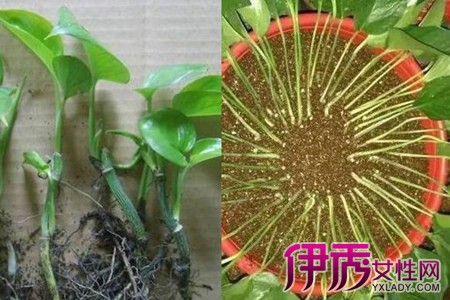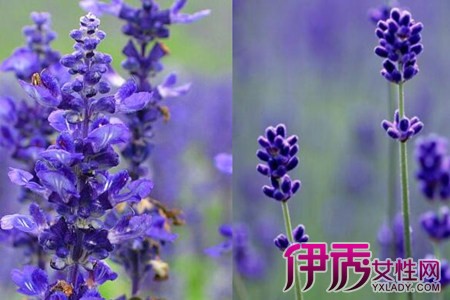Introduction to the methods and steps of planting lavender at home when to bloom

Lavender grasslands are produced along the Mediterranean coast and all over Europe. After 10 years of careful cultivation, lavender has formed a scale on the bank of Yili River at the foot of Tianshan Mountain and began to breed in large numbers in China. Because of its fresh and refreshing aroma, rich and pleasant, it is widely used in perfume manufacturing. Lavender is charming and unique in color and fragrance because of its elegant and beautiful flowers and leaves. Loved by more and more young people, they began to grow lavender at home, but the result was not very good. The planting of lavender is mainly divided into the following steps.
1. Time. Lavender is usually sown in spring, but due to differences in geography and climate. Spring is not warm and comfortable everywhere. Seeds can be sown in warm areas from March to June or from September to November, and from April to June in cold areas.
2. Container. Lavender is a perennial shrub. You can use lower flowerpots or other pots when sowing lavender seeds at home. Such as plastic bottles, but should pay attention to the basin should be opaque, there should be bottom holes at the bottom to avoid stagnant water at the bottom of the container.
3. Plant material. The seeds of Arnebia frutescens are small and the budding rate is low, so it is very important to choose soil. Loose, breathable, high water-holding soil is needed. You can find it in some farm vegetable fields, or you can buy special soil for growing flowers in the flower and plant market.
4. Soak in warm water. The seeds of lavender are similar to those of roses, roses and other flowers, with a relatively hard seed coat. Soak in warm water below 40 degrees Celsius to soften the seed coat. After soaking in cool water for 12 to 24 hours, the seeds germinate more easily.
5. Sow seeds. Now pour 1/3 of the soil into the pot, then pour in some fertilizer appropriately, and then pour the soil into the middle of the basin. Sprinkle water slowly to wet the soil and sprinkle seeds. According to the size of each container, choose the distance between the seeds, generally speaking, 3 to 5 centimeters is the most appropriate, and then covered with a thin layer of soil just over the seeds. Water slowly with a fine spray can again, and after sprouting just at the bottom of the container, pull out some dense seedlings appropriately according to the distance between the seedlings.
6. Moisturizing. After sowing, water thoroughly at one time. Watering with a fine spray can, not too hard, so as not to wash away the seeds. After watering, cover the basin with a layer of plastic film, which can poke several small holes in the plastic film to ensure air circulation. Put the pot in a place where there is plenty of sunlight, and it will sprout after a week.
7. Transplant on the basin. After the lavender sprouts, after the seedlings grow 4 to 6 leaves, they can be transplanted into larger flowerpots. The distance between the seedlings is between 3 and 5 centimeters. When changing the basin, wait for the soil to dry. Watering is also needed after transplanting, and the soil is too wet to help root growth. After that, the flowerpot will be shaded for a few days and can be taken care of in the sun.
After the lavender has been planted, all that is left is careful care. The flowering time of lavender is generally in June, there are no flowers or a small amount of flowers in summer and winter, and the amount of flowering in cool areas in summer is also very good. But as long as the training place is sunny and well ventilated. The time from sowing to flowering is usually 18 to 20 weeks, and when you see the blossoming buds, it's worth the wait!
How to sow lavender seeds? Planting method of lavender seed
Picture: lavender
[FAQ] how to sow lavender seeds? Planting method of lavender seed
[expert answers]
Tools / materials: flowerpots, seeds, garden soil, gardening tools, etc.
Methods / steps:
1. Container
Lavender is a perennial shrub, which can be used for about 10 years. The variety is extensive, easy to cultivate, sunny, heat-resistant, drought-resistant, extremely cold-resistant, barren-resistant, saline-alkali resistant, and the cultivation site needs sufficient sunshine and good ventilation. The time from sowing to flowering (or harvest): 18-20 weeks. Lavender should be cultivated in containers above medium size.
2. Plant materials
Lavender seeds are relatively small, and the budding rate is low, so the general sowing soil needs to be loose, breathable, high water holding capacity and sufficient disinfection in order to fluffy soil. If possible, you can use mixed soil such as plant lime soil, vermiculite, peat, water moss, perlite, serpent sawdust, or buy special soil for growing flowers in the flower and plant market.
3. Soak in warm water
Lavender seeds should be soaked in warm water below 40 degrees Celsius. It is easier to germinate after soaking for 12 hours after cooling.
4. Sowing method
Generally larger seeds (such as lavender, sage, rosemary) can be used every 3-5 cm according to the area of each container. After germination, the stronger seedlings were retained depending on the growth status of the seedlings. Small seeds (such as Mayoram) can be sown over a large area. Touch some seeds with your hands and sprinkle them gently on the soil. The seedlings sprouted after germination. Leave 1-3 seedlings as appropriate.
5. Cover the soil
The thickness of seed cover depends on the size of the seed. It is generally 2-3 times the diameter of the seed. The small seed soil should be covered thinner, and the soil covered by lavender seeds is less than 1 cm. Some seeds have strong phototaxis and can not be covered with soil (such as vanilla, rosemary).
6. Moisturizing
Water thoroughly at one time after sowing. A fine spray can is used for watering. Don't push hard so as not to wash the seeds away. It is best to use the sitting basin method, that is, use a large basin to hold 3 basins of water, and sit the container in the basin. Let the water seep in through the bottom hole of the container (the water level in the large basin should not exceed the height of the soil in the container). After sowing, you can also cover the container with plastic film and pierce a few small holes to breathe. Put the container in the sun and keep it at a temperature of about 20 degrees. Most seeds can germinate after a week.
7. Post-germination management
After the lavender seeds germinate, you can take off the cling film. If the seed is small, you can take it off until the seedling is a little stronger.
8. Upper basin transplantation
After the lavender seeds planted in a large area germinate, the seedlings can be put on the flowerpot after growing 4-6 true leaves. Note that the distance between the seedlings is generally 3-5 cm. You need to use a small basin at the beginning. Wait for the seedling to grow up, and then replace the big basin as appropriate. When changing the basin, wait until the soil is dry (because it should be watered after changing the basin, if the soil is wet, the wet time is too long, and the seedlings are easy to grow poorly). First, add more than half of the fertile soil to the small basin. In order not to destroy the root system, there is no need to shake off the soil near the root when transplanting. Move it directly into a small basin and fill the soil with the roots. Be sure to water thoroughly and shade for a few days after transplantation. And then you can put it in the sun for maintenance.
[editor's comments] after the introduction and cultivation of lavender in China, lavender has always been favored by the public, so how to sow lavender seeds? You know, the germination rate of lavender seeds is not high, many flower friends reported that sowing failed, here the first agricultural editor summarized some good methods and suggestions, the above introduced the tools and steps needed for lavender seed sowing, and so on. I hope everyone can plant lavender with seeds.
What are the steps in the culture of hydrangea
Hydrangea, also known as eight Immortals, Ziyang Flower, belongs to the genus Hydrangea of Saxifragaceae. Hydrangea flower white and plump, large and beautiful, its color can be red and blue, pleasing to the eye, is a common potted ornamental flowers and trees. Modern parks and scenic spots are planted in pieces to form a beautiful landscape. Many friends want to plant hydrangea at home, so what are the breeding methods and functions of hydrangea? Let's take a look. The first step in the cultivation of Hydrangea
The first step in the cultivation of hydrangea is to choose the right soil. Hydrangea prefers slightly acidic soil rich in humus and good drainage, because it contains organic fertilizer, which is very conducive to the growth of hydrangea, so it is better to choose humus-rich soil when choosing soil. The second step of the culture method of hydrangea
The culture method of hydrangea requires a suitable temperature. So what is the growth temperature of hydrangea? In general, the suitable growth temperature of hydrangea is 18-28 ℃, the winter temperature can not be lower than 5 ℃, the temperature of 20 ℃ can promote flowering and growth, so we also need to meet the temperature requirements, so it can be conducive to the growth of hydrangea. The third step of the culture method of hydrangea
Hydrangea culture method to the third step is the need for sufficient water. Hydrangea grows in an environment with plenty of fat and water, which can make hydrangea grow faster. Although Hydrangea likes sufficient water, it is better not to water too much. In summer, the weather is relatively hot. You can spray some water on the leaves and on the ground, which helps to maintain the humidity of the air. The fourth step of the culture method of hydrangea
The fourth step of the breeding method of hydrangea requires appropriate fertilization. In the vigorous growth of hydrangea at this stage, hydrangea needs sufficient nutrients, and thin fertilizer and water can be applied every half a month, which can promote the growth of hydrangea, and make the flowers of hydrangea very large and conducive to growth. The fifth step of the culture method of hydrangea
The fifth step of the breeding method of hydrangea requires an appropriate amount of light time. Hydrangea grows slowly in winter, so it needs an appropriate amount of light time in winter. It is suggested that hydrangea can be placed on the balcony and given an appropriate amount of light time to promote the growth of hydrangea, but in summer, the sun exposure will be too large, which can be put indoors for cultivation. Conclusion: the above is the breeding method of hydrangea introduced by Xiaobian. Children's shoes who like hydrangea can try to grow some hydrangea by themselves and make their own balcony or garden become a landscape. More links: | Flower language of red roses | except formaldehyde plants | function of green roses | efficacy and function of Hangzhou white chrysanthemum | when does lotus blossom | | efficacy and function of jasmine tea | Happiness tree picture | function of lavender | Flower language of daisy | efficacy of Kunlun snow chrysanthemum | | Culture method of Junzi Orchid | Culture method of Ivy | cultivation of Ginkgo Tree | Orchid Variety | | is it easy to raise carnations | cultivation method of triangular plum | efficacy and function of yellow chrysanthemum | Gesang flower language | is calla lily poisonous | | what plant absorbs formaldehyde | potted flower picture | efficacy of jasmine tea | efficacy and function of woody fragrance | hydroponic rich bamboo |
- Prev

It is not a problem to learn the cutting method of green pineapple to disperse multiple pots.
Green pineapple is a plant we are familiar with, and the figure of green pineapple can be seen in many units. But many people still don't know about the cuttage of green pineapple. Let's share what is the cutting method of green pineapple.
- Next

Learn how to grow lavender and grow your own fragrant flowers.
Lavender is a kind of flower with a very distant and fresh fragrance. Many people hope to have several pots of lavender at home. However, lavender can not be divided into plants and can not be inserted into poles. It is not so easy to breed, and it is more expensive to buy.
Related
- Fuxing push coffee new agricultural production and marketing class: lack of small-scale processing plants
- Jujube rice field leisure farm deep ploughing Yilan for five years to create a space for organic food and play
- Nongyu Farm-A trial of organic papaya for brave women with advanced technology
- Four points for attention in the prevention and control of diseases and insect pests of edible fungi
- How to add nutrient solution to Edible Fungi
- Is there any good way to control edible fungus mites?
- Open Inoculation Technology of Edible Fungi
- Is there any clever way to use fertilizer for edible fungus in winter?
- What agents are used to kill the pathogens of edible fungi in the mushroom shed?
- Rapid drying of Edible Fungi

